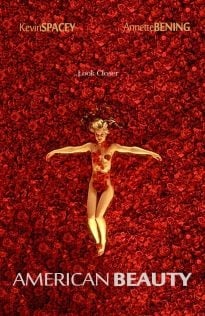Released in 1999, American Beauty is a film that remains relevant for its incisive exploration of suburban life, the quest for happiness, and the nature of beauty. Directed by Sam Mendes and written by Alan Ball, the film won five Academy Awards, including Best Picture, and has since solidified its status as a modern classic. With a captivating performance from Kevin Spacey, American Beauty delves into the complexity of the human experience, revealing the often-hidden struggles beneath the façade of an idyllic suburban existence.
Plot Overview: The Illusion of Perfection
At the heart of American Beauty is Lester Burnham (Kevin Spacey), a 40-something advertising executive who finds himself trapped in a suffocating life filled with discontent. He is married to Carolyn Burnham (Annette Bening), a career-driven woman obsessed with appearances, and together they have a teenage daughter, Jane (Thora Birch), who feels disconnected from her parents.
The film kicks off with Lester’s awakening moment, where he begins to realize how unfulfilled he is in his life. Struck by an intense infatuation with his daughter’s best friend, Angela (Mena Suvari), Lester decides to throw caution to the wind, pursuing his desire for freedom and happiness. This newfound obsession triggers a series of events that ultimately lead him to reclaim his life—albeit through increasingly reckless decisions.
As Lester transforms, the film intricately weaves together the lives of the characters around him. Each person represents a different facet of suburban life: Carolyn’s pursuit of the perfect image, Jane’s struggle for identity, and their neighbor, Frank Fitts (Chris Cooper), whose repressed sexuality leads to tragic consequences. The film uses these interconnections to illustrate how everyone is, in their own way, grappling with the hollowness of their lives.
Themes: Beauty, Desire, and Disillusionment
American Beauty is rich in thematic depth, exploring the concepts of beauty and desire in both superficial and profound ways. The film’s title itself serves as a metaphor for the elusive nature of beauty, suggesting that what we often perceive as beautiful can mask deeper issues.
Lester’s obsession with Angela symbolizes a desire for youth and vitality, reflecting a universal human longing to escape the confines of aging and routine. Yet, this pursuit is complicated; Lester’s actions ultimately lead to both liberating moments and devastating consequences, challenging the viewer to consider the cost of chasing after fleeting desires.
The film also delves into the disillusionment of the American Dream. The Burnham family’s seemingly perfect suburban life is revealed to be a façade, as they each grapple with their own insecurities and failures. Mendes masterfully contrasts the vibrant imagery of suburban life with the emotional emptiness of its inhabitants, forcing the audience to confront the disconnection between appearance and reality.
Cinematic Techniques: A Visual Feast
Visually, American Beauty is a stunning film, marked by its meticulous cinematography and innovative use of color. The film frequently employs striking imagery to convey its themes—most notably, the recurring motif of roses, which symbolize both beauty and the fleeting nature of life. The opening scene, featuring the slow-motion dance of a red rose petal, sets the tone for the entire film, hinting at the themes of beauty and transience.
Mendes and cinematographer Conrad Hall use camera techniques that enhance the narrative’s emotional impact. The deliberate framing and composition create a sense of intimacy, drawing viewers into the characters’ inner lives. The use of lighting also plays a crucial role, with warm, inviting tones juxtaposed against darker moments, further highlighting the contrasts within the story.
The Impact and Legacy of American Beauty
Upon its release, American Beauty sparked conversations about the nature of happiness, the pursuit of beauty, and the intricacies of suburban life. Its candid portrayal of complex themes resonated with audiences and critics alike, leading to its accolades during awards season.
Over the years, the film has inspired a range of interpretations and analyses, from discussions about its portrayal of sexuality to critiques of its depiction of suburban life. While some aspects of the film have been revisited and critiqued in light of contemporary discussions around gender and sexuality, its central themes of beauty, desire, and the human condition remain timeless.
Final Thoughts: A Film Worth Revisiting
In a world where the pressures of perfection and the pursuit of happiness often lead to disillusionment, American Beauty serves as a poignant reminder to look beneath the surface. The film encourages viewers to reflect on their own lives, relationships, and desires.
Whether it’s your first time watching or a revisit to a classic, American Beauty offers a rich tapestry of emotions and ideas, challenging us to seek authenticity amid the chaos of life. Its blend of dark humor, poignant moments, and striking visuals makes it a film that continues to resonate with audiences, solidifying its place in cinematic history.




